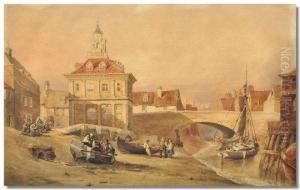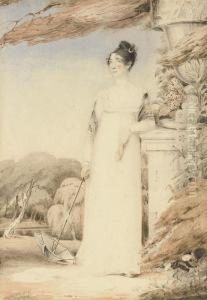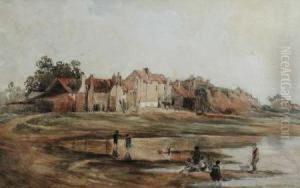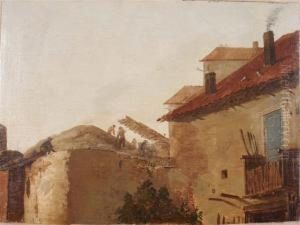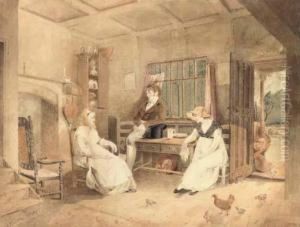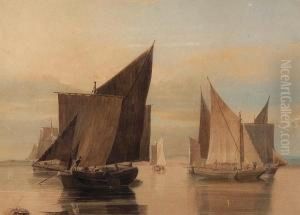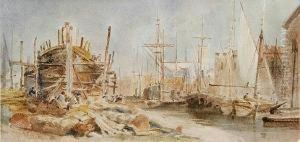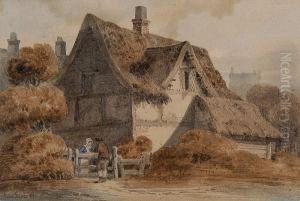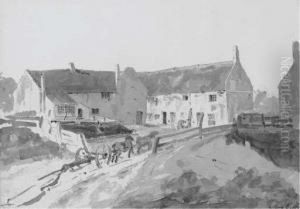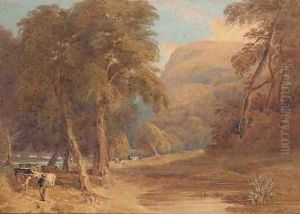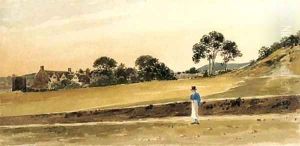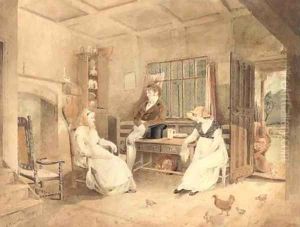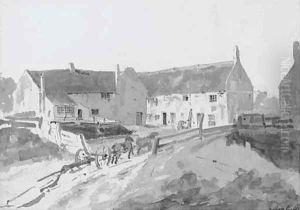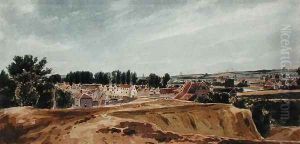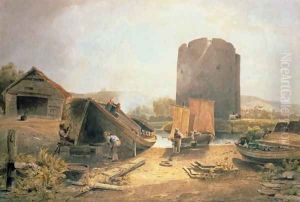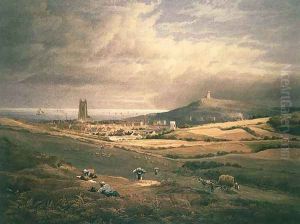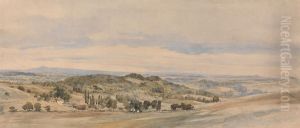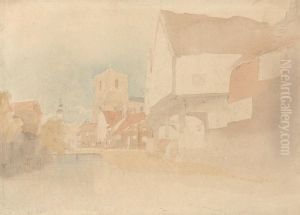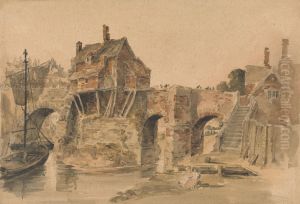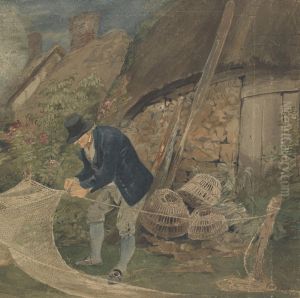John Thirtle Paintings
John Thirtle, born in 1777 in Norwich, England, was an English watercolour artist known for his distinctive landscapes and architectural subjects. Thirtle's early life was modest, and he initially trained as a frame-maker, a skill that provided him with a unique understanding of the presentation and conservation of artworks. This background also offered him a pathway into the artistic circles of Norwich, which, during the late 18th and early 19th centuries, was a vibrant hub for artists and craftsmen.
Thirtle's artistic career began to flourish when he transitioned from frame-making to painting, a move that was both bold and unusual for someone of his professional background. His talent quickly became apparent, and he emerged as a leading figure in the Norwich School of Painters, a movement that is often regarded as the first provincial art movement in Britain. The Norwich School artists were known for their landscapes that captured the unique beauty of the Norfolk countryside, and Thirtle's work exemplified this focus, though he also ventured into capturing the architectural elegance of Norwich and its surroundings.
Unlike many of his contemporaries, Thirtle's approach to watercolour was characterized by a robust use of colour and a preference for dynamic, atmospheric effects. His technique displayed a remarkable ability to capture the interplay of light and shadow, a skill that made his watercolours deeply compelling. Despite the high quality of his work, Thirtle did not achieve the same level of fame as some of his peers, such as John Sell Cotman and John Crome, but his contributions to the Norwich School and the development of watercolour as a respected medium in English art were significant.
Thirtle's life, though marked by his artistic achievements, was also touched by personal tragedy and financial difficulties. He faced the loss of his first wife and struggled with the economic challenges of making a living as an artist in a period of rapid social and technological change. These struggles, however, did not diminish his creative output or his influence on the local artistic community.
John Thirtle passed away in 1839, leaving behind a legacy that, while perhaps not as widely recognized as some of his contemporaries, has continued to be appreciated for its contribution to the English watercolour tradition and its reflection of the early 19th century Norwich artistic scene. Today, Thirtle's works are held in various collections, including the Norwich Castle Museum and Art Gallery, where they continue to be studied and admired for their beauty and technical mastery.

